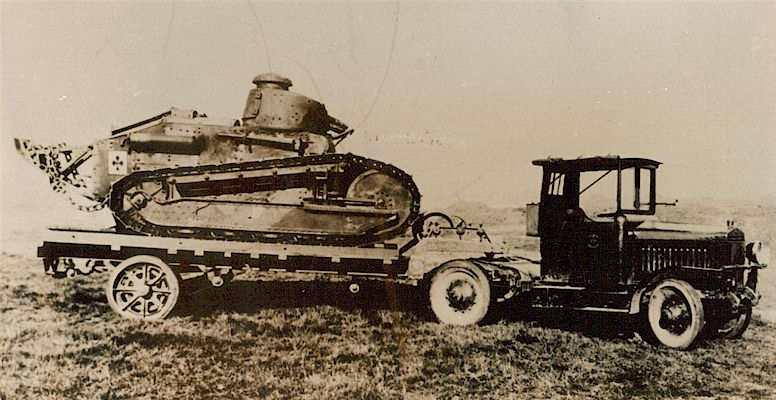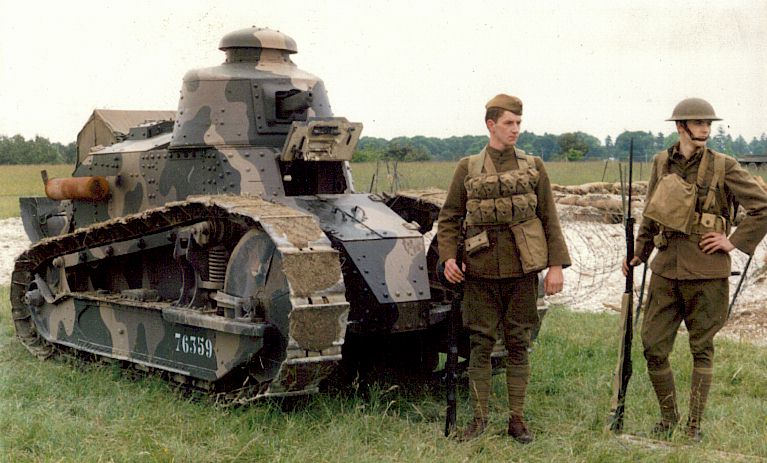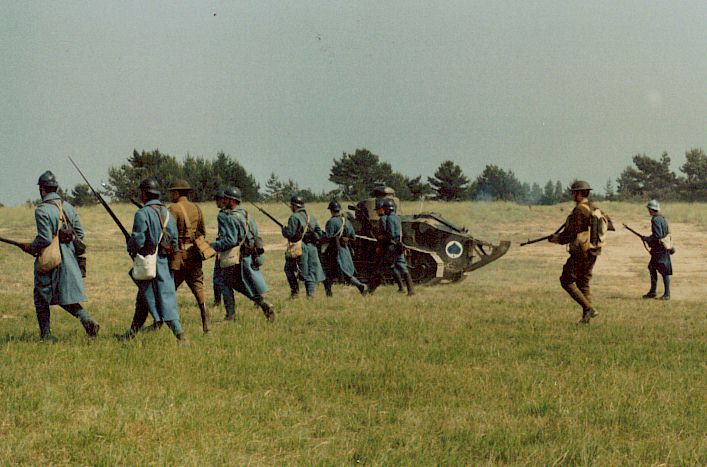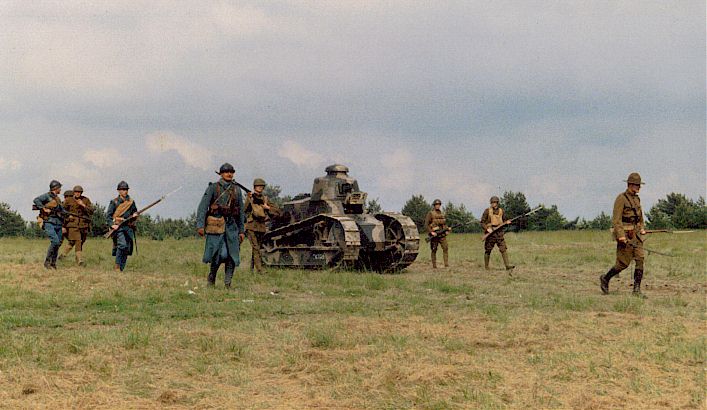





|
DevelopmentStudies on the production of a new light tank were started in May 1916 by the famous car producer Louis Renault, for no apparent reason other than his wish to involve steel tycoon Paul Thomé in his business schemes. One of his most talented designers, Rodolphe Ernst-Metzmaier, was the actual creator of the modern concept. Though the project was far more advanced than the two first French tanks about to enter production, the Schneider CA1 and the heavy St. Chamond, Renault had at first great trouble getting it accepted. Even after the first British use of tanks, on 15 September 1916, when the French people called for the deployment of their own chars, the production of the light tank was almost cancelled in favour of that of a superheavy tank (the later Char 2C). Ironically it was again his own man, Ernst-Metzmaier, who had designed this behemoth when Renault was assisting another firm, FCM. However, with the undiminishing support of Brigadier General Jean-Baptiste Eugène Estienne (1860-1936), the "Father of the Tanks", and the successive French CinC's, who saw light tanks as a more feasible and realistic option, Renault was at last able to proceed with the design. However the competition with the Char 2C was to last until the very end of the war, November 11, 1918. The prototype was slowly brought to perfection during the first half of 1917. Only 84 were produced in 1917 but 2,697 were delivered before the end of the war. At least 3177 were produced in total - and so perhaps more: some estimates go as high as 4,000 for all versions combined. However, the number of 3,177 is the delivery total to the French Army; 514 were perhaps directly delivered to the U.S. Army and three to the Italian - giving a probable total production number of 3694. The tanks had at first a round cast turret; later either an octagonal turret or an even later rounded turret of bent steel plate (called Berliet turret after one of the many coproducing factories). The latter two could carry a 37 mm Puteaux gun or a 7.92 mm Hotchkiss machine gun. In the U.S. this tank was built on a licence as Six Ton Tank Model 1917 (950 built, 64 of which before the end of the war). There is a most persistent myth about the name of the tank: "FT" is often supposed to have meant Faible Tonnage, or, even more fanciful: Franchisseur des Tranchées (trenchcrosser). In reality every Renault prototype was given a combination code; it just so happened it was the turn of "FT". Another mythical name is "FT-18" for the guntank: this designation has never been found in any contemporary source. Also in "FT 75 BS", the "BS" does not mean Batterie de Support |